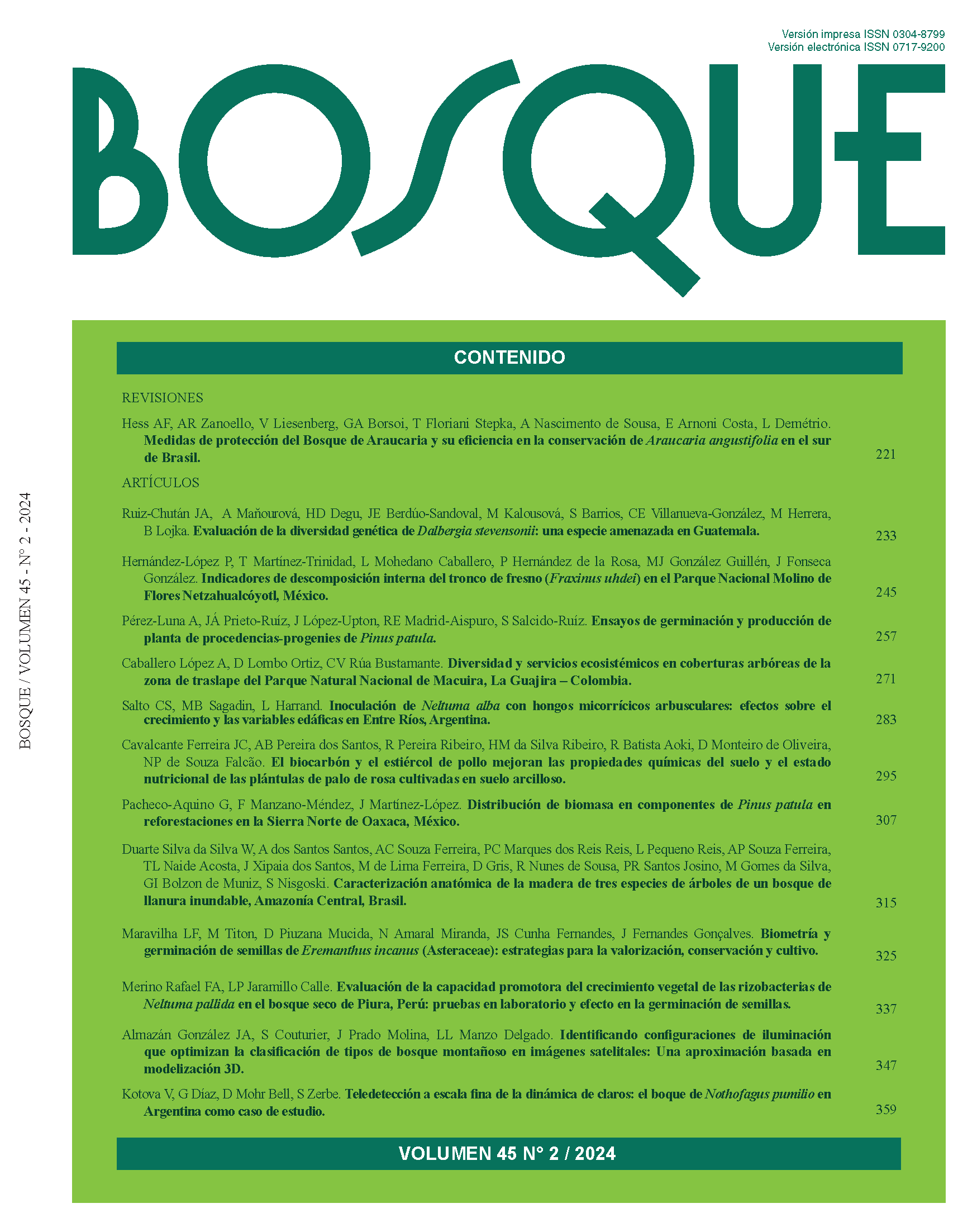Anatomical characterization of wood from three tree species from a floodplain forest, Central Amazon, Brazil
Main Article Content
Abstract
The anatomical structure of wood from tree species found in floodplain forests can undergo alterations due to seasonal fluctuations in water levels, potentially affecting the volume of wood available for sustainable forest management in inundated areas. Thus, this study aims to characterize the anatomical features of Hura crepitans, Ocotea cymbarum and Eschweilera albiflora, assessing whether these characteristics differ from descriptions reported in previous studies of the same species conducted in other environments. Samples were collected from six adult trees of each species in two sustainable development reserves (SDR), Mamirauá and Amanã, located in the middle Solimões region, state of Amazonas, using a non-destructive method with an increment borer. Two samples were collected from three different heights (0.30, 1.30, and 2.30 m). Microscopic descriptions of the species were determined (porosity, axial parenchyma, rays, fibers, and vessel elements). Two-way factorial ANOVA followed by Tukey’s post hoc test was used to verify the differences in the anatomical elements of the wood samples collected at the three heights. The wood of H. crepitans has diffuse porosity, a predominance of solitary vessels, diffuse-in-aggregates, scarce axial parenchyma, non-storied rays, and libriform fibers. The wood of O. cymbarum has solitary vessels in radial multiples, vasicentric axial parenchyma, non-storied rays, and septate fibers. E. albiflora has a radial grouping of vessels, banded parenchyma, and non-storied rays. This study confirms previous descriptions of this species, revealing that its anatomical characteristics remain constant throughout the trunk.


 https://orcid.org/0000-0002-0090-7564
https://orcid.org/0000-0002-0090-7564